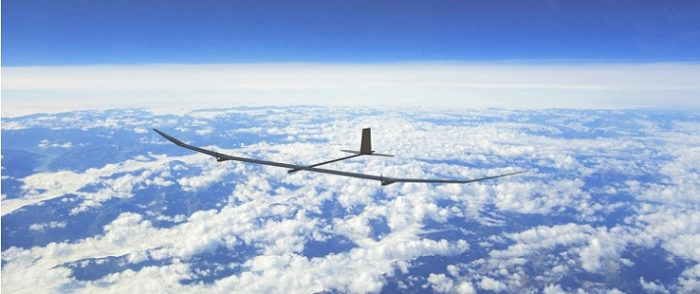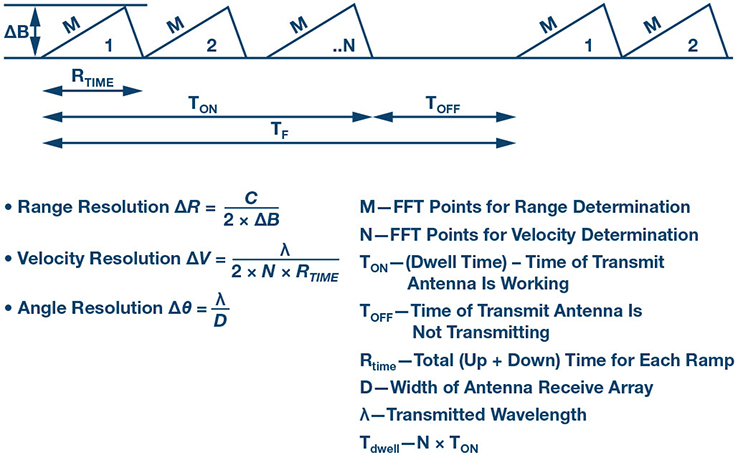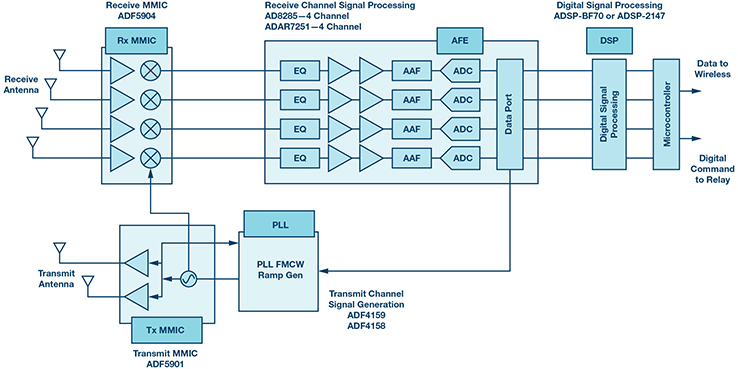
© BAE Systems (illustration purpose only)
Application Notes |
Technological solutions to overcoming hurdles in UAVs and Systems market
Over the last decade, unmanned aerial vehicles and systems (UAVs/UASes)—also referred to as drones—have become widely popular and gained significant interest in commercial, consumer, and government markets.
What used to be a largely military- focused application now has more than 400 companies worldwide engaged in developing drone technology and enabling use cases for the new era of commercial drones. The premise of having a flying object that can perform mission critical and business critical tasks, without much human involvement, offers a pivotal moment in the realm of smart automation and productivity. Regulations by the Federal Aviation Administration (FAA) and other agencies, despite their positive intentions, limit the mass application of these drones. Additionally, growing competition is already leading to commoditization before the market has even gained its footing. This article discusses how innovations in RF and microwave technology can provide a technical justification to ease regulatory barriers and help drone manufacturers differentiate their solutions to better succeed in the marketplace.
Introduction
With the advent of industrial robots, autonomous driving, new propulsion technology, and power efficient systems, the transition to UAVs is a natural evolution. An unmanned flying object that can be programmed to perform tasks that are too dangerous, time consuming, or difficult for humans is a huge technological leap toward a more automated and productive world. The concept of UAV/UAS is not too new and has been used in some shape or form since manned aircraft were put into mass use.
Unfortunately, the limits to our material science, propulsion, power and battery, sensor, and software technology capabilities have restricted the use of drones to very specific industries and applications. Traditionally, only large military forces were able to justify the cost to develop and use drones for intelligence, reconnaissance, and surveillance missions in environments that are too dangerous for humans to operate. Even today, many of us relate drones to military missions that we commonly hear about in the news.
Alternatively, low cost, bare bones drones have been gaining steady popularity among enthusiasts and hobbyists for recreational purposes. Drones have not been widely used for commercial applications, but that’s now changing as the industry makes strides in component technology and computing software.
Market Growth, Segments, and Applications
The drone market is expected to grow to about $21 billion by 2022. Today, a large majority of the market (about 82%) is focused on military applications. Commercial drones are expected to account for about $2.5 billion in revenue by 2021—a 19% year-over-year growth rate.
There is a wide range of use cases in the commercial and industrial drone market. Drones are being explored for variety of applications such as precision agriculture (crop spraying), terrain and environmental monitoring, infrastructure monitoring (bridges and dams), public safety surveillance, commercial freight, border control, and oil and gas pipeline monitoring, among many other applications. Each month, dozens of new companies are introducing products and services that use drone technology to solve business problems. In short, the prospects for commercial UAV applications are virtually limitless.
Challenges Within UAV/UAS Industry
Even though the drone market is becoming widely popular, with multiple companies exploring various use cases (for example, Amazon and Alphabet’s Google), the industry faces challenges that limit its growth.
Heavily Regulated and Restricted
The FAA has strict rules that limit the use of drones in public air space. According to a 2015 ruling, drones weighing less than 55 pounds are allowed to operate during the day and within the visual line of sight of the operator. In other words, these drones are not allowed to operate fully autonomously. These FAA regulations are put in place for safety and security reasons. From a government’s standpoint, the risk posed by most of these drones that are not equipped with reliable and accurate sensors is too high to allow their operation in open public spaces. In some instances exceptions are granted (for example, in large open agricultural areas), but in the majority of cases, due to limited sensor technology and unproven sensor reliability, the FAA has taken a more conservative stance for safety and security reasons.
Competitive Threats and Commoditization
In addition to regulatory hurdles, the drone market is becoming increasingly competitive, which is creating pricing pressure. Drawn by UAVs’ attractive growth potential and cool factor, there are already more than 400 companies worldwide involved in some form of drone-related development. Incidentally, the focus for most of these companies is to differentiate their hardware, rather than emphasizing the value-added services that their drones may enable.
Limited RF and Microwave Expertise
To enable their widespread use, commercial and consumer drones must be equipped with navigational sensors that help them autonomously operate in a safe and reliable way. As observed in automotive and industrial equipment markets, many of these wireless sensors use RF and microwave technology. However, most commercial companies developing drones today are start-ups with limited expertise in RF and microwave design. Even well-established industrial original equipment manufacturers (OEMs) with some RF experience are hard-pressed to quickly evaluate, design, and manufacture radar sensor solutions for the fast changing UAV market.
The lack of RF expertise and readily available radar solutions creates a vicious cycle for the industry. The UAV market’s inability to offer reliable sensors that enable fully autonomous operation, in turn, prevents government agencies from relaxing regulations that currently restrict autonomous drone operation.
Radar Solution and Its Versatility
At Analog Devices, we believe that UAV manufacturers have an opportunity to influence regulatory policies governing drone operation by embracing the RF, microwave, and millimeter wave technology that will enable the safe navigation of drones using proven sensor technology. One example is the deployment of 24 GHz radar, which is potentially one of the most basic and versatile solutions for demonstrating multiple use cases for safe navigation, given that it already is classified as the globally recognized industrial, scientific, and medical (ISM) band.
A 24 GHz ISM band radar can be used anywhere in the world, without regulation, for functions such as automatic collision avoidance systems and radio altimeters. The same radar band also can be used to detect and track multiple different objects and measure how high a drone is flying above the ground—two of the most basic features of safe drone operation.
One should note that there seems to be a common misconception that 77 GHz radar can be used in place of 24 GHz ISM radar. Based on the regulations today, the 77 GHz band is dedicated only for automotive vehicles and does not include UAV/UAS. Technologically, 77 GHz radar does offer higher bandwidth for improved resolution, but based on today’s regulations, it cannot be used in UAV applications.
By proving that their solutions are technically capable of operating autonomously, manufacturers will be able to influence existing regulations, rather than waiting for regulators to define the way industry should operate.
To get to this point, UAV manufacturers need to take three steps:
 Figure 1. FMCW radar concepts.
Figure 1. FMCW radar concepts.
 Figure 2. Analog Devices’ 24 GHz multichannel radar solution.
Figure 2. Analog Devices’ 24 GHz multichannel radar solution.
Analog Devices offers a complete bits-to-antenna radar solution to allow engineers to quickly start developing their applications. Using this kit designers do not have to individually select multiple different RF, microwave, and baseband components, and then write code for their software algorithms. Rather, using the plug-n-play kit, even non-RF designers can get started with radar designs in minutes.
24 GHz, Multichannel Radar System Performance Advantage
When building a radar sensor every dB improvement in receiver sensitivity affects the detection range. Most solutions available in the market today primarily focus on cost reduction and thereby trade off phase noise performance and limit the number of channels. This degrades the overall receiver signal-to-noise (SNR) ratio, which limits the detection of smaller objects or targets while in the presence of larger objects. In practical radar applications, busy or cluttered target scenarios exist, which can cumulatively increase system phase noise and desensitize the radar receiver. Higher system noise masks or hides small targets and prevents object detection, which potentially can cause a sensor safety issue—for example, detecting a narrow tree branch that may be masked by the façade of a building. Most single-channel, single-chip, low cost solutions are unable to provide the needed performance to make this distinction.
Using Analog Devices’ 24 GHz multichannel platform, UAV manufacturers can:
 Figure 3. Demorad 24 GHz radar platform solution.
Demorad comes with a complete GUI and DSP radar support function libraries.
The radar system signal chain in demorad includes basic software algorithms to allow designers to get started with no coding. Using these built-in software algorithms, engineers can quickly start to use the radar to detect and classify targets from a host PC.
Developers can edit the existing software code to specifically detect and classify objects for their applications. Demorad provides a new level of design flexibility to companies, with or without RF design experience, to quickly develop applications for the safe navigation of UAVs.
Summary
The UAV/UAS market is growing fast and offers tremendous potential for many new commercial applications. But to make this vision a reality, UAV manufacturers need to lead the industry by embracing RF, microwave, and millimeter wave sensors to demonstrate that UAVs can be safely operated autonomously. Additionally, the landscape of sensor technologies is rapidly changing, and newer technologies such as LiDAR (light detection and ranging), ToF (time-of-flight), and ultrasonic are on the rise as well. UAV manufacturers should continue to stay aware of these newer solutions to be able to utilize the latest technologies for their drones.
As they evaluate these technologies, radar performance, and versatility should be among their key criterions, and factor more than just the cost of the hardware.
Figure 3. Demorad 24 GHz radar platform solution.
Demorad comes with a complete GUI and DSP radar support function libraries.
The radar system signal chain in demorad includes basic software algorithms to allow designers to get started with no coding. Using these built-in software algorithms, engineers can quickly start to use the radar to detect and classify targets from a host PC.
Developers can edit the existing software code to specifically detect and classify objects for their applications. Demorad provides a new level of design flexibility to companies, with or without RF design experience, to quickly develop applications for the safe navigation of UAVs.
Summary
The UAV/UAS market is growing fast and offers tremendous potential for many new commercial applications. But to make this vision a reality, UAV manufacturers need to lead the industry by embracing RF, microwave, and millimeter wave sensors to demonstrate that UAVs can be safely operated autonomously. Additionally, the landscape of sensor technologies is rapidly changing, and newer technologies such as LiDAR (light detection and ranging), ToF (time-of-flight), and ultrasonic are on the rise as well. UAV manufacturers should continue to stay aware of these newer solutions to be able to utilize the latest technologies for their drones.
As they evaluate these technologies, radar performance, and versatility should be among their key criterions, and factor more than just the cost of the hardware.
About the Author: Abhishek Kapoor is the market development manager in the RF and Microwave Group (RFMG) at © Analog Devices. He is responsible for developing the broad market strategy and gaining business in new and emerging markets for the RFMG. He can be reached at abhishek.kapoor@analog.com.
- Develop a basic understanding of radar and its various modes
- Understand the components of the RF signal chain required for a complete radar solution
- Adopt radar solutions that provide a complete hardware setup and the software algorithms that will allow them to get to market faster
 Figure 1. FMCW radar concepts.
Figure 1. FMCW radar concepts.
- Range resolution is dependent on transmitter carrier sweep bandwidth; the higher the transmitter sweep bandwidth, the higher the range velocity of the radar sensor
- Velocity resolution depends on dwell time and carrier frequency; the higher the carrier frequency or dwell time, the better the velocity resolution
- Angular resolution depends on carrier frequency; the higher the carrier frequency, the better the angular resolution
 Figure 2. Analog Devices’ 24 GHz multichannel radar solution.
Figure 2. Analog Devices’ 24 GHz multichannel radar solution.
| Part | Description | Function |
| ADF4159 | 13 GHz fractional-N FMCW ramping PLL | Ramp generator |
| ADF5901 | ISM band, 2-channel FMCW transmitter | Transmit MMIC |
| ADF5904 | ISM band, 4-channel receiver | Receive MMIC |
| ADAR7251 | 4-channel, 16-bit continuous time data acquisition ADC | AFE |
| ADSP-BF70x | Low power ADSP-BF70x series of Blackfin® embedded DSP processors with 512 kB L2 SRAM and DDR2/LPDDR interface | DSP |
- Utilize FMCW radar to detect range and velocity of objects up to 200 m away with a resolution of approximately 60 cm (resolution can be improved to 15 cm with application-specific antenna design)
- Achieve a field of view of approximately 120° in azimuth and 15° in elevation based on the antenna array design; by combining antennas as used in digital beam, the radar can use DBF to calculate angular information for a wider field of view
- Achieve (compared to traditional low cost, single-channel radar solutions) / At least 2× improvement in sensitivity; Up to 1.5× better detection range; Lower power consumption
 Figure 3. Demorad 24 GHz radar platform solution.
Demorad comes with a complete GUI and DSP radar support function libraries.
The radar system signal chain in demorad includes basic software algorithms to allow designers to get started with no coding. Using these built-in software algorithms, engineers can quickly start to use the radar to detect and classify targets from a host PC.
Developers can edit the existing software code to specifically detect and classify objects for their applications. Demorad provides a new level of design flexibility to companies, with or without RF design experience, to quickly develop applications for the safe navigation of UAVs.
Summary
The UAV/UAS market is growing fast and offers tremendous potential for many new commercial applications. But to make this vision a reality, UAV manufacturers need to lead the industry by embracing RF, microwave, and millimeter wave sensors to demonstrate that UAVs can be safely operated autonomously. Additionally, the landscape of sensor technologies is rapidly changing, and newer technologies such as LiDAR (light detection and ranging), ToF (time-of-flight), and ultrasonic are on the rise as well. UAV manufacturers should continue to stay aware of these newer solutions to be able to utilize the latest technologies for their drones.
As they evaluate these technologies, radar performance, and versatility should be among their key criterions, and factor more than just the cost of the hardware.
Figure 3. Demorad 24 GHz radar platform solution.
Demorad comes with a complete GUI and DSP radar support function libraries.
The radar system signal chain in demorad includes basic software algorithms to allow designers to get started with no coding. Using these built-in software algorithms, engineers can quickly start to use the radar to detect and classify targets from a host PC.
Developers can edit the existing software code to specifically detect and classify objects for their applications. Demorad provides a new level of design flexibility to companies, with or without RF design experience, to quickly develop applications for the safe navigation of UAVs.
Summary
The UAV/UAS market is growing fast and offers tremendous potential for many new commercial applications. But to make this vision a reality, UAV manufacturers need to lead the industry by embracing RF, microwave, and millimeter wave sensors to demonstrate that UAVs can be safely operated autonomously. Additionally, the landscape of sensor technologies is rapidly changing, and newer technologies such as LiDAR (light detection and ranging), ToF (time-of-flight), and ultrasonic are on the rise as well. UAV manufacturers should continue to stay aware of these newer solutions to be able to utilize the latest technologies for their drones.
As they evaluate these technologies, radar performance, and versatility should be among their key criterions, and factor more than just the cost of the hardware.About the Author: Abhishek Kapoor is the market development manager in the RF and Microwave Group (RFMG) at © Analog Devices. He is responsible for developing the broad market strategy and gaining business in new and emerging markets for the RFMG. He can be reached at abhishek.kapoor@analog.com.

